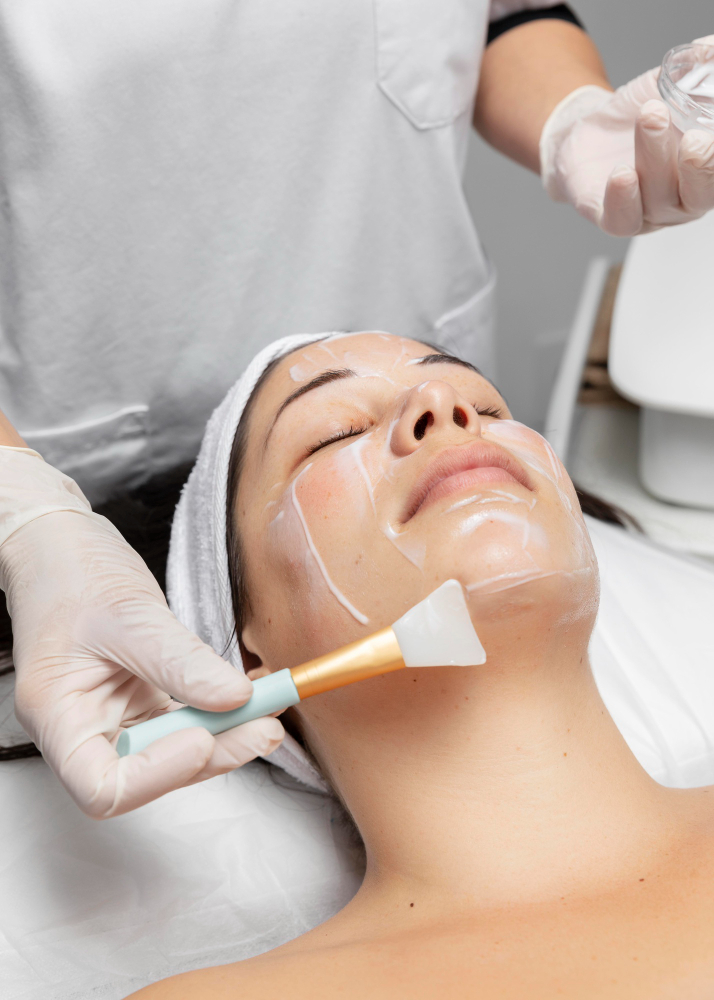In the pursuit of flawless, radiant skin, many individuals are turning to innovative skincare treatments that promise to enhance their complexion and address various skin concerns. Among these treatments, chemical peels have gained significant popularity due to their effectiveness in rejuvenating the skin. This article explores the ins and outs of Chemical Peels in Dubai, their process, types, and aftercare, providing a comprehensive understanding of how they can help achieve smooth, glowing skin.
Understanding Chemical Peels
Chemical peels are dermatological procedures that involve the application of a chemical solution to the skin, leading to controlled exfoliation. The primary goal of a chemical peel is to remove damaged outer layers of skin, promoting new skin growth and revealing a fresher, healthier appearance underneath. This technique is suitable for various skin types and can be customized according to individual needs.
The effectiveness of chemical peels lies in their ability to treat a range of skin issues. Whether you’re struggling with acne scars, sun damage, uneven skin tone, or fine lines, chemical peels can offer a tailored solution. By stimulating collagen production and enhancing cell turnover, these treatments help restore skin vitality and promote a youthful glow.
Types of Chemical Peels
Chemical peels can be classified into three main categories based on their depth of penetration: superficial, medium, and deep peels.
1. Superficial Peels
Superficial peels, also known as light peels, are the mildest form of chemical peel. They typically use alpha hydroxy acids (AHAs) or beta hydroxy acids (BHAs) to gently exfoliate the outermost layer of the skin. These peels are ideal for individuals with mild skin concerns, such as dryness, dullness, and minor acne. Superficial peels require little to no downtime, making them a popular choice for those seeking a quick refresh.
2. Medium Peels
Medium peels penetrate deeper than superficial peels and often utilize trichloroacetic acid (TCA) or a combination of acids to target more significant skin issues. They are effective for treating sun damage, age spots, and moderate acne scarring. Medium peels may require a few days of recovery, during which patients may experience redness and peeling as the skin regenerates.
3. Deep Peels
Deep peels are the most intensive form of chemical peel, using stronger acids such as phenol. These peels are designed to treat severe skin imperfections, including deep wrinkles, extensive sun damage, and significant scarring. Recovery from deep peels can take longer, with several weeks needed for the skin to heal fully. Due to their potency, deep peels are usually performed only by qualified dermatologists or plastic surgeons.
The Chemical Peel Process
Before undergoing a chemical peel, a consultation with a qualified skincare professional is essential. During this consultation, the practitioner will assess your skin type, discuss your concerns, and determine the most suitable peel for your needs. It’s crucial to inform them about any medications, skincare products, or previous treatments you’ve undergone.
On the day of the procedure, the area to be treated will be cleansed thoroughly to remove any makeup or impurities. Depending on the depth of the peel, the practitioner may apply a topical anesthetic to minimize discomfort. The chemical solution is then applied evenly to the skin and left on for a specified amount of time. After the appropriate duration, the solution is neutralized, and post-peel care instructions will be provided.
Aftercare and Recovery
Post-peel care is crucial for achieving the desired results and ensuring the skin heals properly. After a chemical peel, the skin may appear red, sensitive, or swollen, similar to a mild sunburn. Following the procedure, it’s essential to keep the skin moisturized and protected from sun exposure. Using a gentle cleanser and avoiding harsh products for a few days will also aid in the healing process.
It’s vital to avoid picking or peeling the skin as it begins to exfoliate, as this can lead to scarring or infection. Instead, allow the skin to shed naturally for the best results. Most patients can return to their regular skincare routine within a week, but it’s advisable to follow the specific recommendations given by your practitioner.
Conclusion
Chemical peels offer a promising solution for those seeking smooth, glowing skin. With various types available, ranging from superficial to deep peels, individuals can find a treatment that aligns with their skin concerns and lifestyle. The process, while straightforward, emphasizes the importance of professional guidance to ensure safety and effectiveness. By following proper aftercare, individuals can enjoy the transformative effects of chemical peels and unveil a brighter, healthier complexion. Whether you’re looking to reduce fine lines or improve skin texture, chemical peels stand out as a viable option in the realm of skincare.



